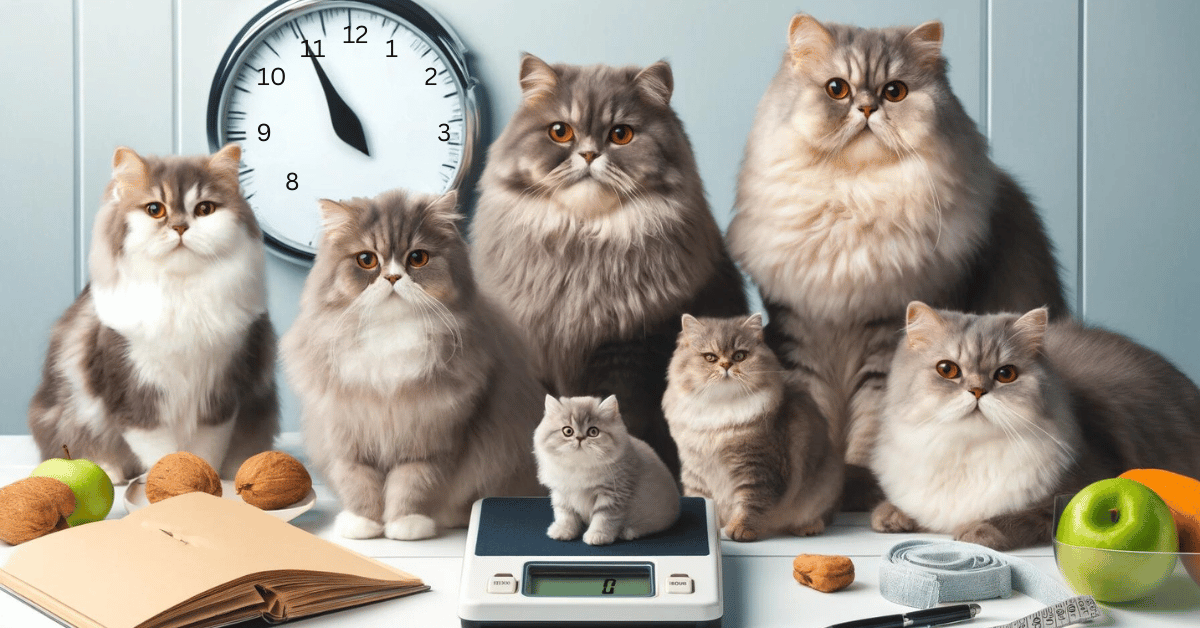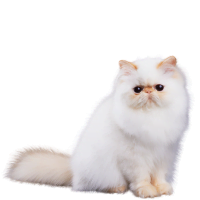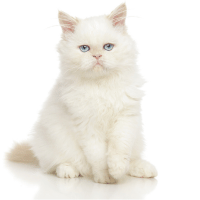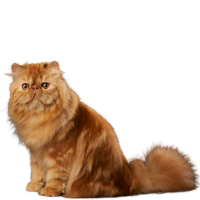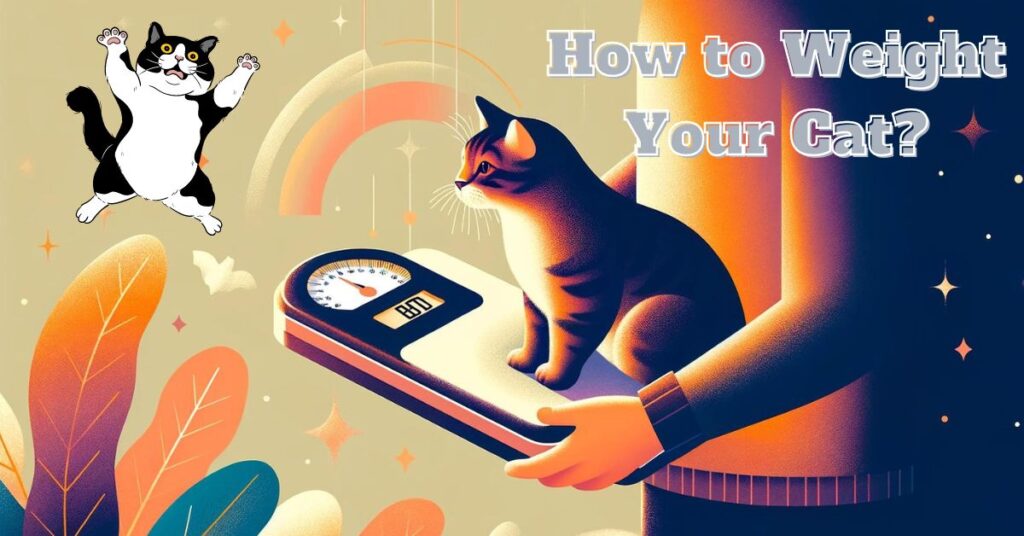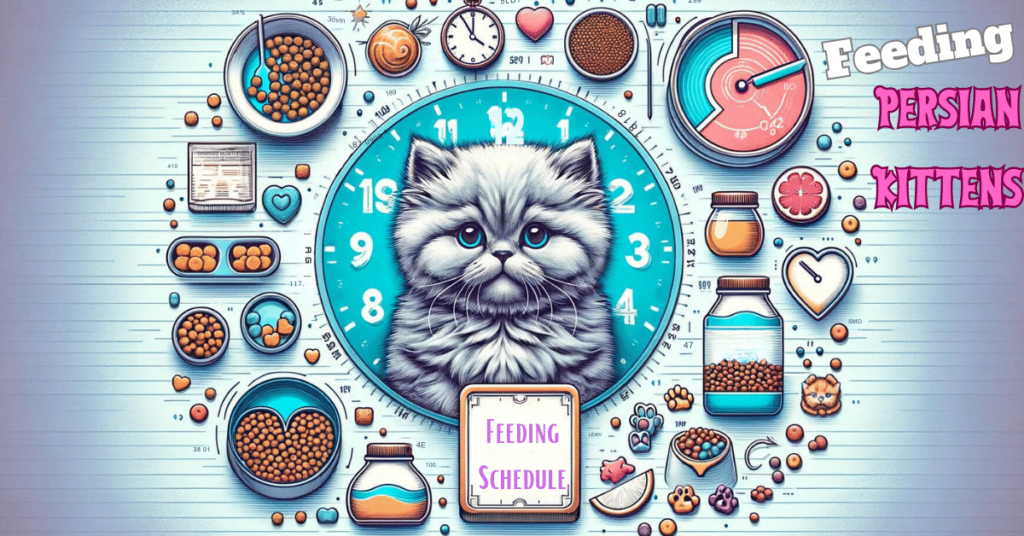This post contains affiliate links and I will be compensated if you make a purchase after clicking on my links.
How Does the Persian Cat Weight Calculator Works?
To utilize the Persian Cat Weight Calculator, follow these simple steps:
- Select Sex: Choosing the sex of your Persian cat is mandatory.
- Enter Age: Input the age of your Persian cat in weeks, months, and/or years within the respective input fields. You have the flexibility to enter values for any or all of these fields.
- Unit Selection: By default, the calculator presents weight estimates in pounds (lbs). If you prefer kilograms (kgs), simply click the “Kgs” button adjacent to the unit selector.
- Calculate: After entering the sex and age of your cat and selecting the preferred unit, click the “Calculate” button. The estimated weight range for your Persian cat will be displayed below the button.
Persian Cat Weight Calculator
Average Weight Ranges for Persian Cats
Infancy and Growth Spurts
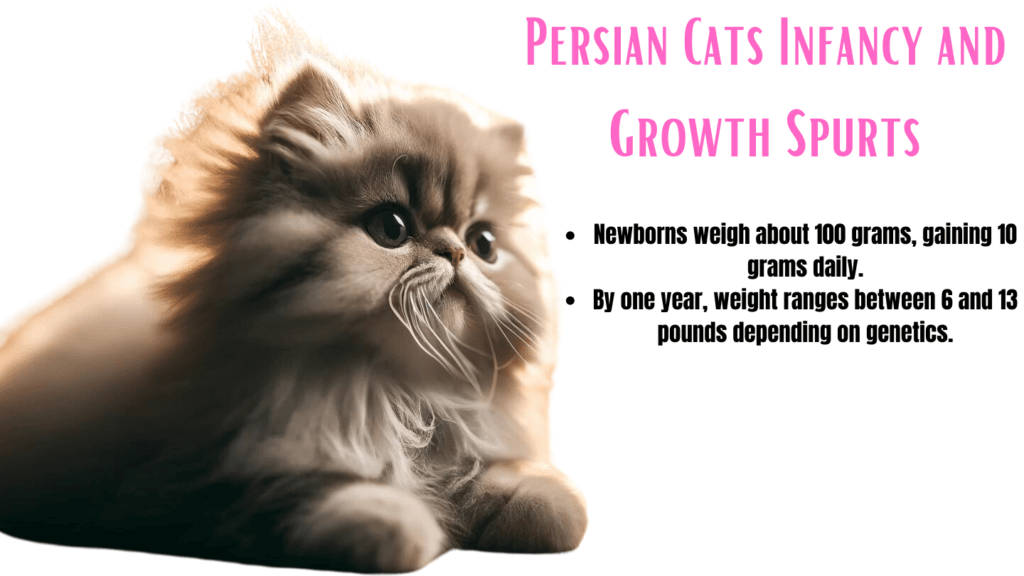
During the first year of life, Persian kittens experience rapid weight gain. Initially, newborns may weigh as little as 100 grams and should gain about 10 grams per day. By the time they reach one year, most Persian cats will have achieved much of their adult size, typically weighing between 6 and 13 pounds, depending on their individual genetic makeup.
Reaching Maturity
As Persian cats advance past their first birthday, their growth rate significantly slows down. They continue to mature and gain body mass, albeit at a slower and more gradual pace. Most Persians will stop growing by the age of 2 years. This is the stage where they reach their full skeletal and muscular maturity, settling into their lifelong physique.
Adult Weight Plateau
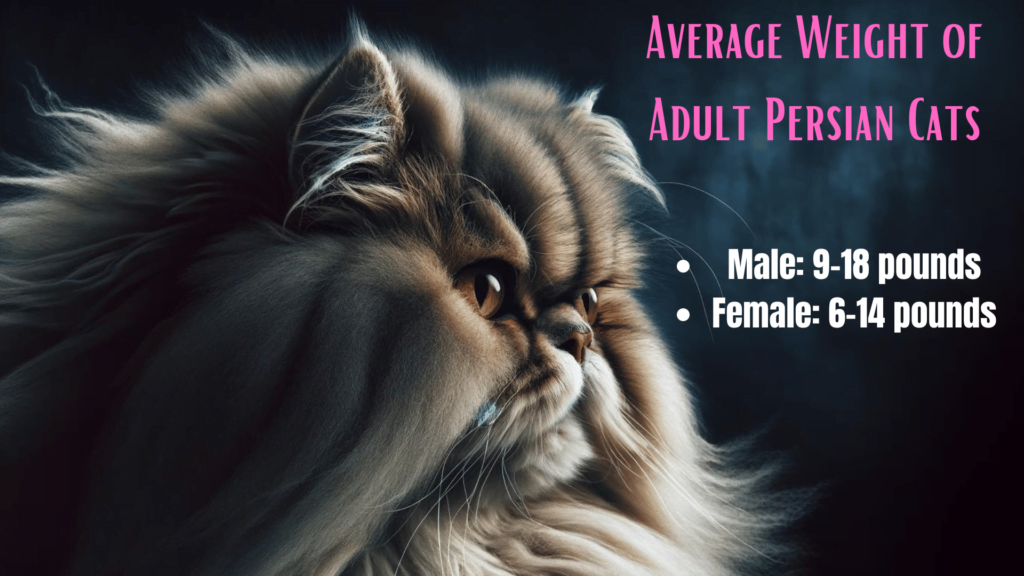
Once maturity is reached, a healthy Persian cat should maintain a stable weight. The typical weight range for adult Persians varies slightly between genders:
- Male Persian Cats often weigh between 9 and 18 pounds, reflecting their generally larger stature.
- Female Persian Cats tend to be lighter, with weights usually ranging from 6 to 14 pounds.
Weight Trends for Aging Persian Cats
As Persian cats enter their senior years, typically starting around 8 years of age, subtle changes in their body composition and metabolism begin to occur. These changes can impact their overall weight and health:
- Metabolic Slowdown: The metabolic rate in senior cats tends to decrease, which can lead to weight gain if their caloric intake is not appropriately adjusted. On average, a weight gain of up to one pound is common in less active seniors.
- Muscle Mass Reduction: Alongside potential weight gain, senior Persian cats often experience a loss of muscle mass. This natural decline can result in up to one pound of weight loss and may contribute to overall frailty.
- Normal Weight Variance: Fluctuations of one pound up or down are generally normal and not immediately concerning in senior Persian cats. However, these should be monitored to ensure they stay within this range.
- Health Monitoring: Any significant deviation from this one-pound variance should be taken seriously. Weight changes greater than one pound can indicate potential health issues and a veterinarian should evaluate the cat to diagnose any underlying problems.
Important: Regularly weigh your Persian cat to ensure their weight remains stable as they age. Use our Persian Cat Weight Calculator or other trusted sources to compare their weight against typical age-related benchmarks.
Factors Affecting Weight in Persian Cats
Genetic Factors
Persian cats come from a genetically diverse background, which can significantly influence their potential size and weight. Genetic predisposition plays a crucial role in determining whether a Persian will be on the lighter side of the scale or have a heftier build.
Nutrition
Proper nutrition is crucial for the growth and health of Persian cats. On average, a nutritionally balanced diet should provide 45 to 60 calories per kilogram of body weight daily, tailored to the cat’s activity level and health.
However, kittens have higher energy needs and may require up to twice or three times this amount, depending on their growth stage. For the most accurate guidance, use our Persian Kitten Calorie Calculator to determine the ideal caloric intake.
Environment
The environment in which a Persian cat is raised can also affect its growth and weight. Cats raised in restrictive conditions, such as shelters, may experience stunted growth due to stress and inadequate nutrition. Conversely, cats in loving, stress-free homes with ample space to play and exercise are more likely to reach their full genetic potential.
Health Issues
Several health issues can also impact the weight of a Persian cat. Common concerns include hypothyroidism, diabetes, and gastrointestinal problems, which can all lead to unexpected weight gain or loss.
Assessing Your Persian Cat’s Weight and Body Condition
Understanding Body Score Condition (BSC)
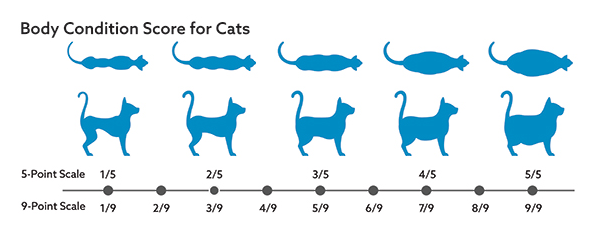
Regularly weighing your Persian cat and comparing their weight with the benchmarks from our Persian Cat Weight Calculator is an essential first step in monitoring their health. However, weight alone isn’t the whole story.
The Body Score Condition (BSC) is an invaluable second step for visually and descriptively assessing whether your Persian cat is underweight, overweight, or just right. This method goes beyond the simple scale by examining the balance of fat and muscle, offering a fuller picture of your cat’s health.
It’s important to remember that a hefty-looking cat might still be in the prime of health if that extra “heft” is muscle rather than fat. To make this process a tad easier, here’s a handy table to help you “score” your fluffball at home:
| Body Part | Underweight | Healthy | Overweight | Obese |
|---|---|---|---|---|
| Ribs | Peaks visible; pointy to touch | Smooth with slight padding | Hidden under a fat layer | Buried under fat, unnoticeable |
| Stomach | Pronounced tuck | Slight tuck | Rounded shape | Belly close to the ground |
| Waist | Clearly defined | Visible from above | Hard to discern | Hidden by belly |
| Spine | Bony, prominent | Smooth, palpable | Cushioned; palpable with effort | Covered in fat, hard to feel |
Regular Check-ups
Regular veterinary check-ups are essential to get a precise assessment of your cat’s health status. These visits help confirm the BSC evaluations and ensure that any subtle changes in weight or condition are noted and addressed promptly.
Managing Your Persian Cat’s Weight
If Overweight
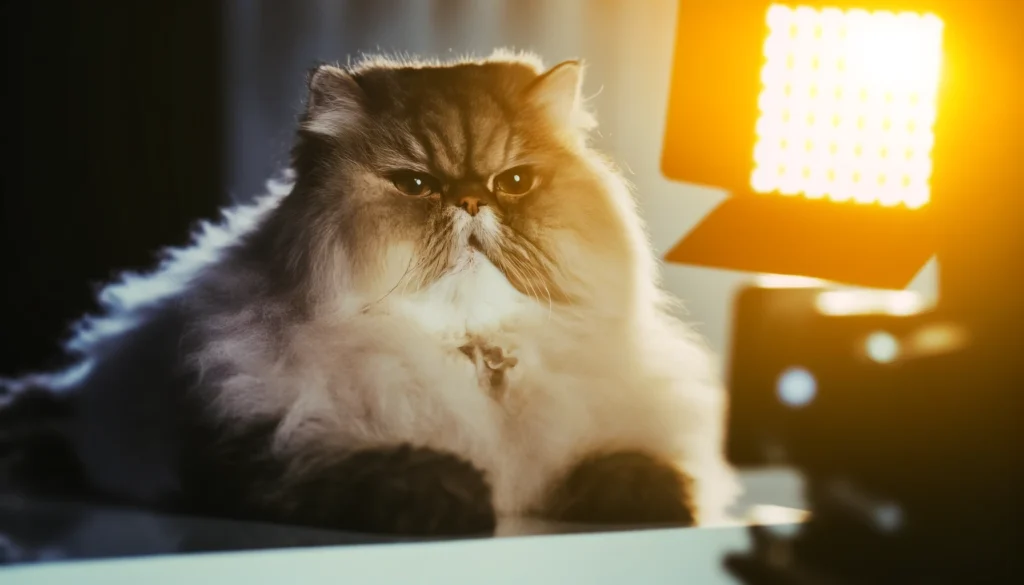
- Diet Adjustments: Gradually reduce calorie intake while ensuring the diet remains balanced and full of essential nutrients. Consider a weight management cat food formulated for weight loss, but always under veterinary supervision to prevent nutritional deficiencies.
- Motivation Tips: Brachycephalic breeds like Persians tend to be less active, often needing a nudge to get moving as they might not initiate play on their own. Boost their activity levels by scheduling regular play sessions.
- Hydration: Hydration is essential to managing hunger and supporting metabolic health. Incorporating cat water fountains can encourage adequate water intake, ensuring your feline friend stays hydrated and healthy.
- Interactive Toys and Play: Although cat wheels might not suit Persians, alternatives such as laser pointers, feather wands, and motorized mice can effectively encourage activity and play. These toys are excellent for keeping your Persian cat engaged and active.
Check out this list of alternative exercises to cat wheels that are more suitable for Persian cats>>
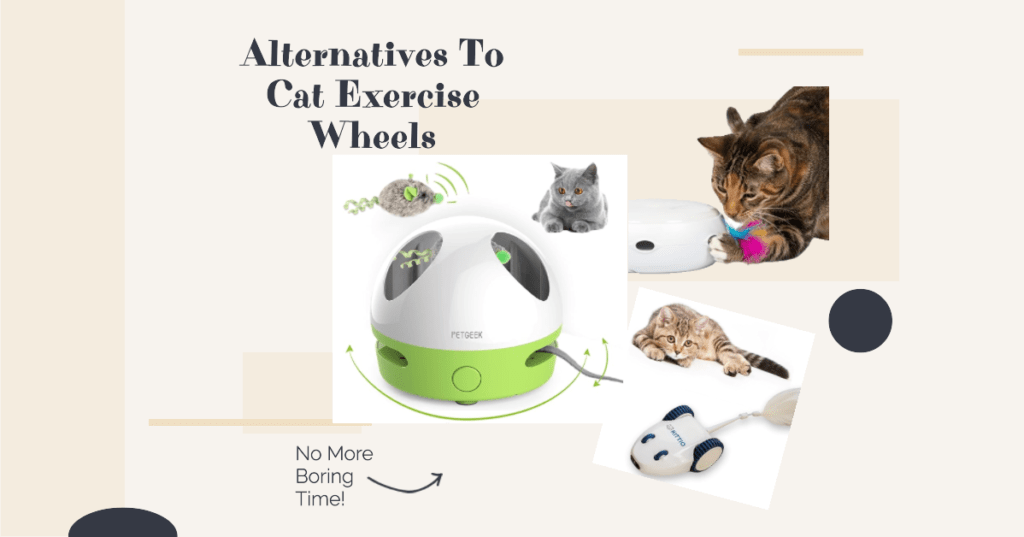
If Underweight

- Identifying Causes: Look into potential causes such as dental problems, stress, or more serious underlying health issues.
- Dietary Strategies: Implement a high-calorie diet or special feeding tactics as advised by your veterinarian to safely increase weight.
- Importance of Veterinary Care: Essential for diagnosing and treating the root cause of weight loss.
If at Optimal Weight

- Maintaining Healthy Weight: Monitor calorie intake to ensure it aligns with your cat’s lifestyle and energy levels.
- Regular Physical Activity: Engage your cat in daily play sessions and activities to keep them active and healthy.
Lifespan and Weight of Persian Cats
The average lifespan of a Persian cat is typically between 12 to 16 years. Maintaining an optimal weight is crucial for maximizing these years and ensuring a high quality of life.
- Impact of Obesity: Overweight Persian cats are at a higher risk for several health conditions, including diabetes, heart disease, and joint problems. These health issues can not only diminish life quality but also potentially reduce a cat’s lifespan by 2-3 years.
- Consequences of Being Underweight: Similarly, underweight cats may be suffering from malnutrition or underlying health issues that can severely impact their overall health and shorten their lifespan.
Summary: Keeping Your Persian Cat at a Healthy Weight
Monitoring your Persian cat’s weight and overall body condition is crucial for their overall health and well-being. Regular use of tools like our Persian Cat Weight Calculator and adherence to veterinary advice can help ensure that your cat leads a long, healthy life. Encourage regular vet check-ups and maintain a consistent wellness routine for your furry friend.
Meet Sean, a fintech whiz with a penchant for pet purrs and blockchain buzz. After a decade of fintech feats, Sean’s tech talents leaped from ledger lines to litter lines, driven by a passion for pets and a vision for a more connected pet care community. With three critter companions as co-pilots, Sean launched this blog to share a treasury of pet-friendly tech tips and tales.

